
Many insurance companies are looking to tap the power of third-party data to gain critical insights into their potential customer base. By blending third-party data with first-party data, these insurance providers can improve their decision-making capabilities through advanced analytics and predictive modeling. These data and analytics capabilities improve the underwriting process and help teams provide a better overall customer experience.
Let’s take a look at how insurance organizations are blending Foursquare Places data on AWS Data Exchange to gain a more holistic view of the customer.
Using AWS Data Exchange and Foursquare Places
Third-party data sharing is the exchange of data with external stakeholders and other public data sources. This differs from first-party data sharing internally within your organization and second-party data sharing with your vendors or business partners.
The challenge with the external data ecosystem is that it is fragmented across a diverse set of data brokers, data aggregators, and other types of data products. That’s why many organizations use a solution like AWS Data Exchange, which has consolidated the data from hundreds third-party providers, such as Foursquare, into a centralized service.
Using AWS Data Exchange, insurance providers can tap into Foursquare Places data to make smarter decisions about customer policies and more. Places, or point of interest (POI), data provides firmographic details such as venue names, addresses, and categories, as well as rich content attributes (such as photos, reviews, and tips). Foursquare Places encompasses 130 million POIs globally, across 200 countries and 50 territories, and 900+ venue categories. In addition, the Visits feed includes data on where customers go in the real world, by tapping into a 100M+ user panel in 20+ countries.
As many insurance providers accelerate their digital transformation initiatives, it becomes even more important to use legacy internal data alongside cloud-native, third party sources within AWS Data Exchange. Here’s how this data is used, and why analysis-ready data is important.
Improving the Digital Customer Experience in Insurance
Many insurance companies today are competing on customer relationships, rather than price. That’s why having the deepest, data-driven insights can help with underwriting, claims and other common processes – making them more efficient and effective for customers.
In the past, many insurance providers were using proxies for risk management, such as credit scores, geographic and demographic data. Digital data, such as location-based services, are now used by insurers to assess risk. For example, to evaluate a business policy, an insurance provider might use Foursquare data to understand surrounding businesses and assess risk. Businesses can mitigate these risks by installing devices such as water level indicators or fire sprinklers to help avoid claims, which is all a part of initial policy pricing.
In addition, user-generated photo imagery from Foursquare can be incorporated into carriers’ existing data. Many carriers are looking to evolve to a continuous underwriting process to validate assumptions they made when they originally priced the policy, and see what may have changed. During the COVID-19 pandemic, these insights were particularly useful to businesses that had to adjust their business operating procedures – for example, restaurants installing heat lamps and tents outside to service guests. The proximity of these new hazards to existing risks may impact the pricing of a policy.
These types of data, combined with existing legacy data such as flood zoning and fire risk maps, can prove impactful when mapping topography and determining the final risk for businesses, homeowners and more.
Leveraging AtScale to Blend First- and Third-Party Data
The typical insurance organization has data living in legacy systems, SaaS applications, and marketplaces such as AWS Data Exchange. First-party data, SaaS apps, and third-party data brokers all have their own schemas for data. If you want to do an effective analysis of this data, you need to model the data correctly. That’s where AtScale’s semantic layer comes in.
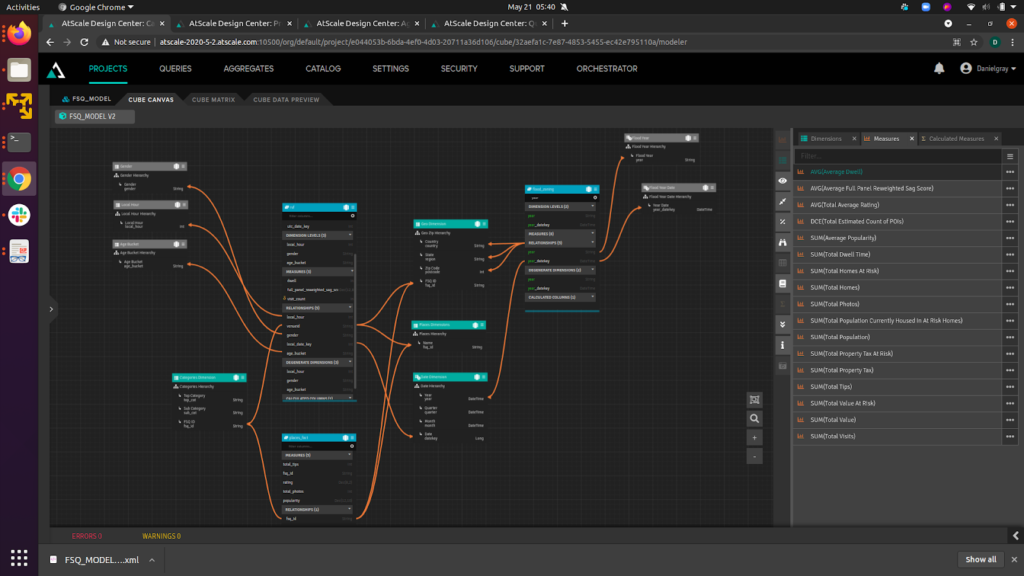
AtScale’s semantic layer uses live connections with on-premise and cloud data sources to break down internal data silos and make external data more accessible.
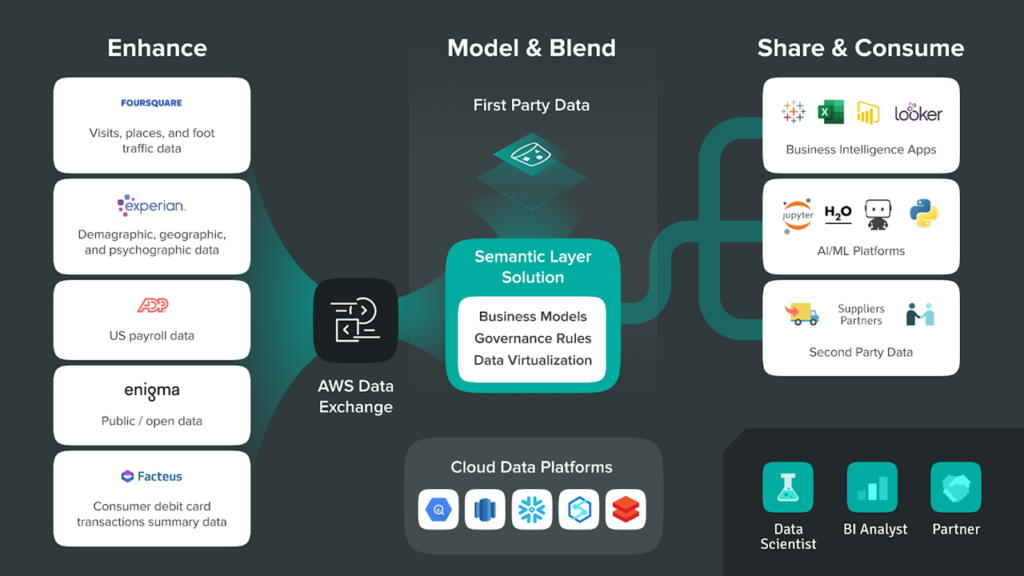
In addition, data virtualization enables companies to share third-party data throughout the organization without expensive and time-consuming data movement and transformations. Data virtualization hides the complexity of dealing with multiple data sources, so that business analysts and Data Scientists can more easily consume blended datasets within popular BI (e.g. Power BI, Tableau, Excel) and AI/ML tools (DataRobot, H2O, Python).
As the volume of data continues to accelerate, insurance companies are tapping into big data sources like Foursquare Places and AWS Data Exchange in real-time to make smarter decisions. Using AtScale, organizations can enable self-service analytics with both internal and external data at scale. This allows insurance companies to enhance their existing datasets to create more streamlined customer experiences and compete on relationships, not transactional details.
Get Foursquare Places & Visits data, pre-modeled for insights by AtScale, by requesting a free trial. For more information on using pre-modeled Foursquare Places & Visits data, watch this 20 minute overview demo.
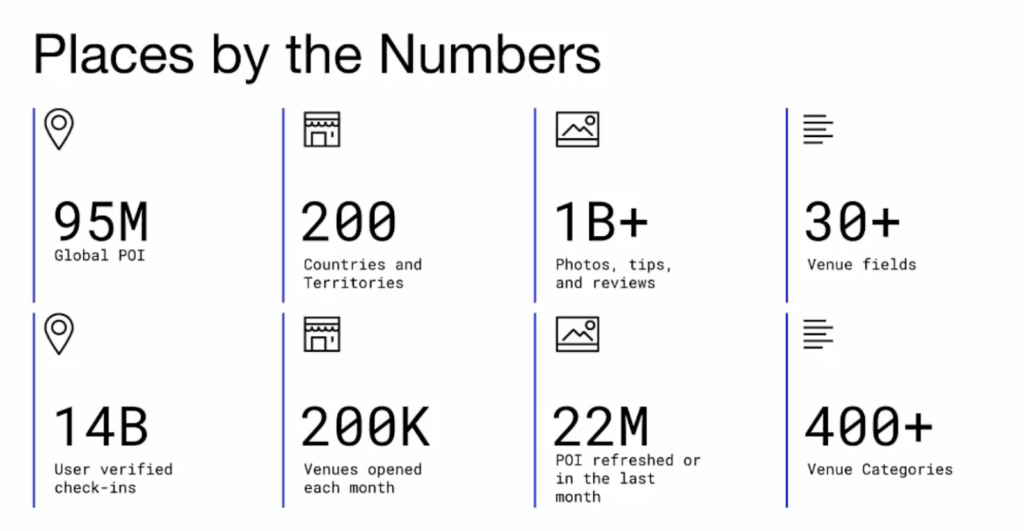
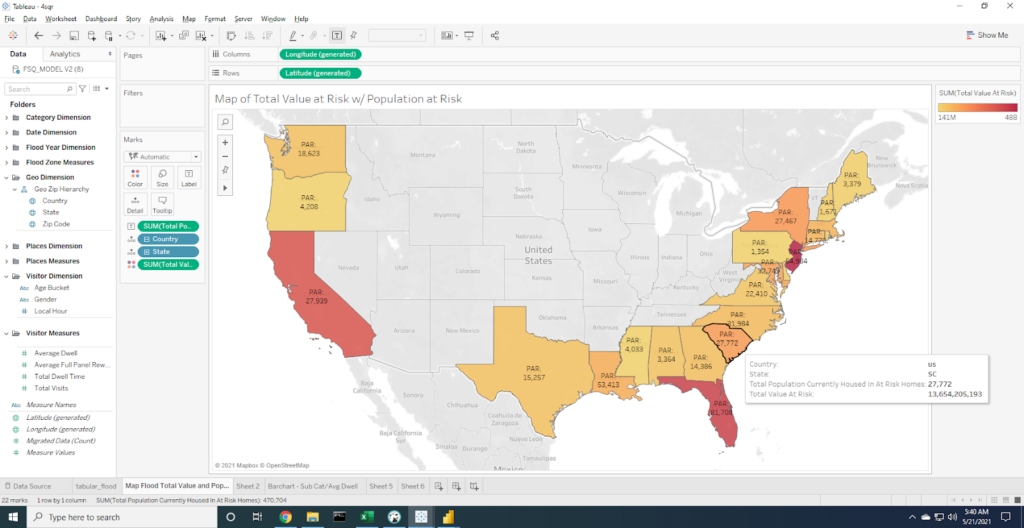
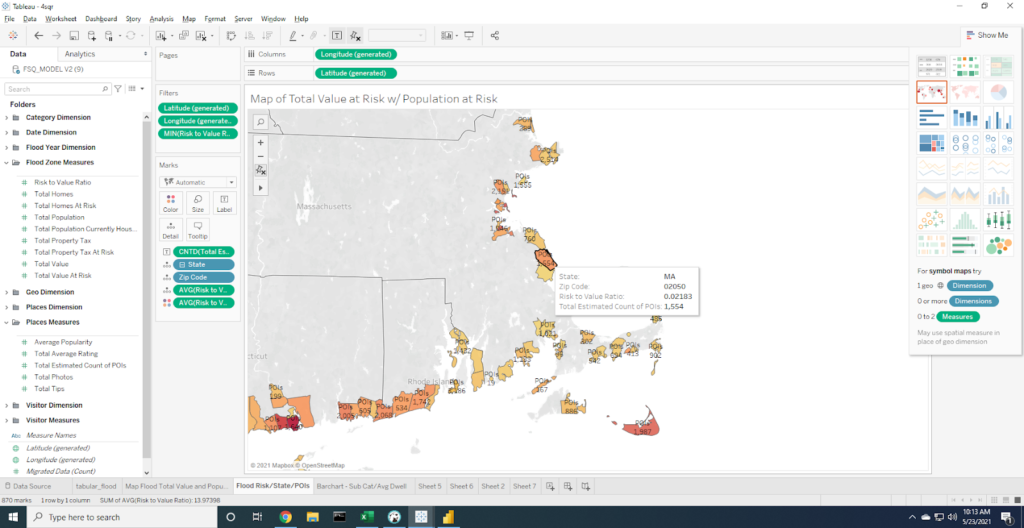
SHARE
Case Study: Vodafone Portugal Modernizes Data Analytics